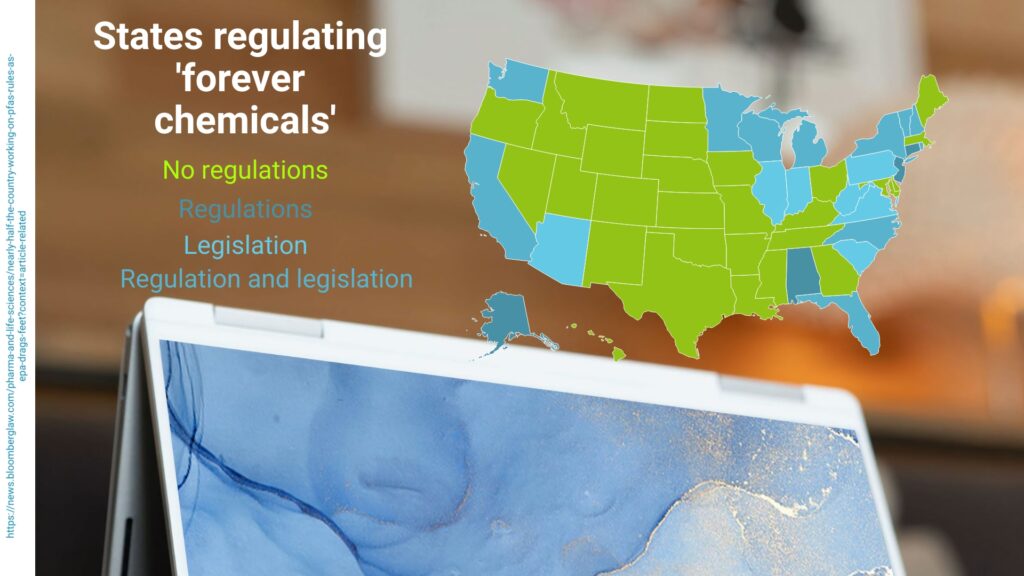“Forever chemicals” invade Ohio drinking water systems

They’re in everything from firefighting foam to carpeting to Teflon pans. Lately, they have been found in Dayton’s drinking water. Now they’re affecting the health and wellness of communities across the state of Ohio. Perfluoroalkyl and Polyfluoroalkyl Substances or forever chemicals are widely used, long-lasting chemicals whose components break down slowly over time. They are a group of chemicals used to make fluoropolymer coatings and products that resist heat, oil, stains, grease and water.

Courtesy of akronohio.gov.
“[PFAS are] really chemically stable and if they get into something like groundwater or some sort of large reservoir of water, where they can sort of slowly leach out, then it can be really hard to sort of get them out and clean them up,” said Dave Costello, biogeochemistry professor. “They can, that’s common, have lots of manufactured chemicals that are manufactured to be really stable. Once they get in the environment, that stability then becomes a problem.”
Exposure to these chemicals can lead to a buildup in the bloodstream and organs which can result in cancer, kidney disease and developmental problems in children. Costello said testing often tells experts how much people can ingest before the effects are detrimental to their health.
“It’s not necessarily whether you encounter the chemical but it’s how much of a particular chemical you actually come into contact with,” said Costello. “We’ve got more powerful tools to do that. But then it becomes a sort of even more important to understand that just because you measure something is there does not necessarily mean it’s harmful.”
Forever chemicals can enter into drinking water at sites where they are made, used, disposed of, or spilled. They can also be found in the air near manufacturing facilities and can enter rainwater. PFAS are very mobile can be transported through rainwater run-off and enter surface water (lakes, ponds, etc.) or seep through the soil and migrate into groundwater (underground sources of drinking water).
“If it it ends up in surface water, there’s certainly a possibility of it getting through to somebody’s drinking water in their home. It could get through the process because it’s not something that’s a primary contaminant that they have to purposely test for, or even a secondary contaminant in drinking water like odor,” said Pete Bucher, managing director of water policy for the Ohio Environmental Council. “Ohio gets the majority of its drinking water in the various communities from surface water sources. If it’s in a surface water source, it could end up in a treatment facility.”
PFAS have ended up in the drinking water in many communities in and around the Ohio border. Records show that crews at the Dayton International Airport disposed of firefighting foam multiple times – including accidental spills – in recent years, and the foam introduced FPAS into the environment.
Several miles from the airport testing site, drinking water wells at Aullwood Audubon Farm Discover Center and surrounding Butler Township were found to have PFAS in their drinking water. However, testing is available for those in communities that feel that their drinking water is unsafe.
“Testing can be formal as an engineer and expert coming out to do it if the EPA was leading the testing. And there are organizations like Freshwater Future, they’re great lakes regional group that offers PFAS testing, Bucher said. “They’re offering at-home PFAS test kits as an option for somebody that could acquire one of those if you wanted to test for it.”
Clean water has been prioritized by leaders in Ohio for many years which has enabled the testing that has already been done and will pave the way for any further testing. In September 2019, Governor Mike DeWine asked the Ohio EPA and ODH to develop an action plan by December 1, 2019, to test public and private water systems and develop a strategy to work with communities and private well owners on appropriate response measures if high levels of PFAS are found. Some objectives of the action plan include gathering and providing sampling data from specific types of public water systems to determine if PFAS is present in drinking water, and assistant private water systems owners in guidelines for responding to potential PFAS contamination.
“You know that that commitment by DeWine is broad and focused on lots of different things from plant nutrients to chemicals like this. I actually don’t know if it falls under that purview or not. But I will say there’s a history in Ohio of leaders in regulation of chemicals and understanding chemicals and the role they play in ecosystems and human health. So it’d be nice to see that continue,” Costello said.
Currently, there are no federal or Ohio drinking water regulations for any PFAS chemicals, other than a currently non-binding health advisory from the U.S EPA. The proposed Ohio “Safe Drinking Water Act” or House Bill 497 requires the Ohio EPA to set numeric limits on PFAS in drinking and surface waters.
“This bill is essentially directed by the Ohio EPA, and the Ohio Department of Health who governs private water systems to test our water systems to see if we had these chemicals present. Ideally, they’ll go forward and do surface water tests just to get a really full picture. I think it was a good start to see what’s coming out of facilities to people’s homes, but we’re hoping to see more,” Bucher said.